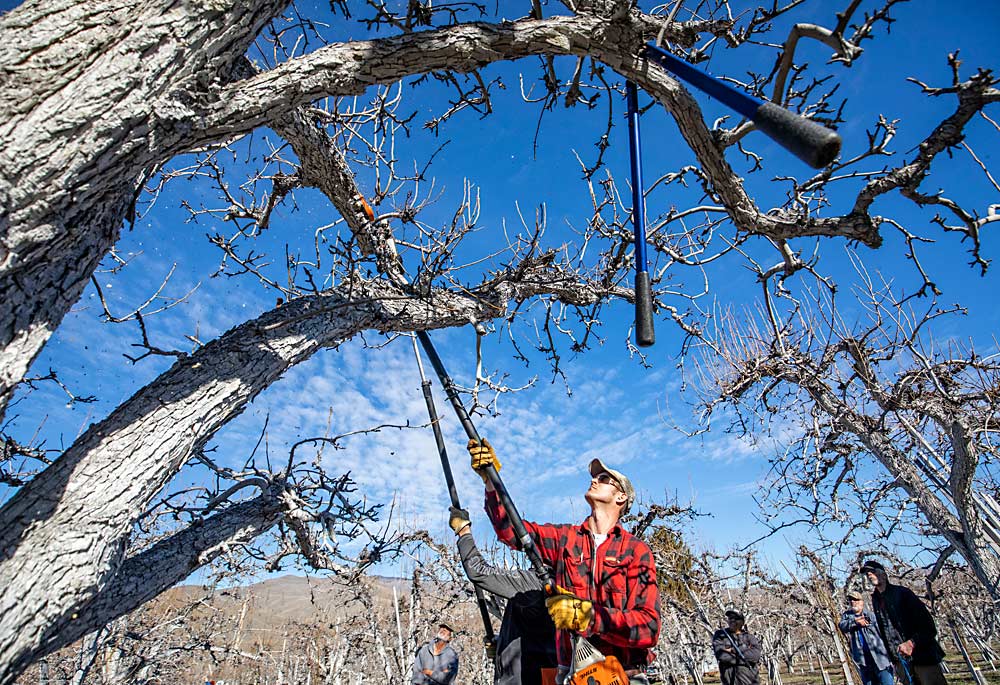
Growing high-quality pears requires good light interception and good spray penetration, both of which can be compromised as mature canopies grow increasingly shaded. That’s why Washington State University Extension chose light management as the focus for its pear pruning demonstrations in February, extension specialist Tianna DuPont said.
Because pruning is as much an art as it is a science, DuPont enlisted six experienced growers to share how they approach pruning older trees using an approximately 60-year-old block of Anjou in the Cashmere area. Despite some differences in style and risk tolerance, each pruner had the same basic process and goals: one or two big cuts to reduce shade, removing limbs that create spray shadows and sucker crowns that can hide pests, and letting bud quality guide decisions.
“The idea is that if we can open the canopy, we can have more homogeneous fruit production,” said Stefano Musacchi, tree fruit physiologist at Washington State University’s Tree Fruit Research and Extension Center in Wenatchee. “Never try to reduce the pruning costs, because reduction in pruning means low quality.”
Grower Rudy Prey agreed. “Pruning is where you can do the most good or harm,” he said. “It’s definitely the most important job in the orchard.”
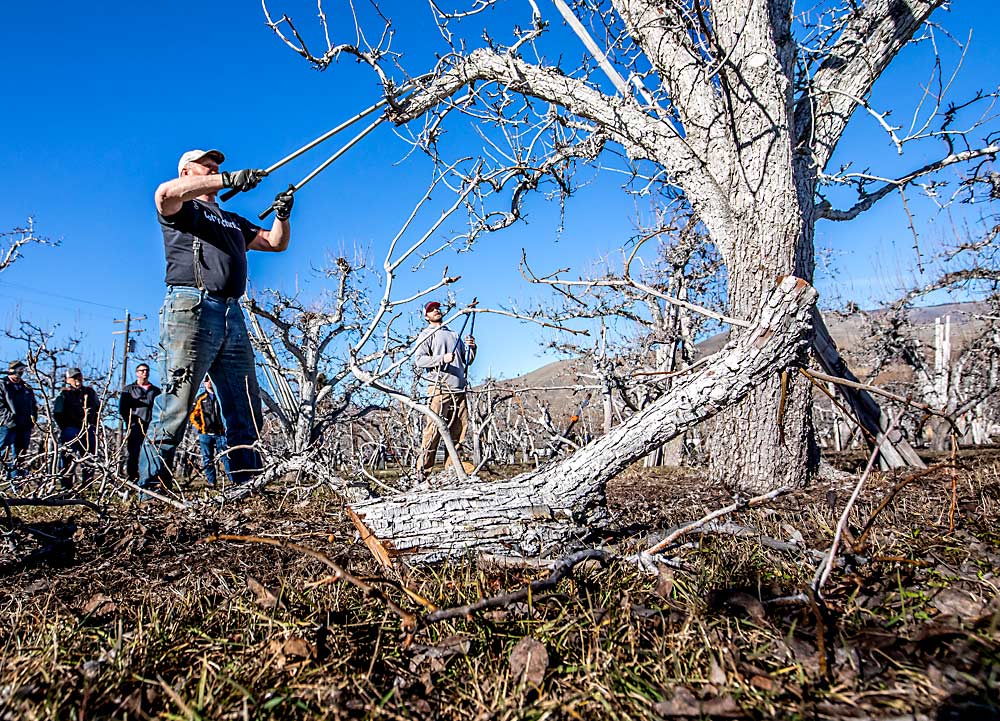
Big cuts
Prey started the demo by debating where to make a big cut with his co-pruner, Greg Harnden. They quickly agreed on a large leader that was shading a more productive leader below it, but they discussed with Musacchi whether or not they should just remove it all this year or prune it back in stages over a couple of years, to keep the tree in balance.
“I’d take it all off, because if you cut it back 2 feet, you have the same problem,” Harnden said, but he recommended cutting the leader out in smaller sections. “Don’t let your guys cut out the whole thing. You don’t want to damage the branches you want to keep.”
Prey also voted to take out the whole leader, since the moderate-vigor tree had lots of buds and lots of wood. Vigor always guides pruning decisions, he said. “So, you can take that big branch out and prune the rest pretty light,” he said. “We like to make those big cuts and still have a big crop.”
Musacchi recommended thinking about the view of the tree from the top, making sure each horizontal limb has exposure to the light.
At another tree, growers Ray Schmitten and Dave Piper had a similar debate: whether to remove a large limb all at once or over several years. There are a lot of valid choices for where to cut, but you can’t do it all at once without risking too much vigor the following season.
“If this was my tree, it’d be on a three- to five-year plan,” Piper said. He’s concerned about invigorating the tree too much and ending up with cork spot developing in the fruit.
Hard winter pruning and overfertilization both drive vigorous shoot growth that takes calcium away from the fruit where it is needed, resulting in cork spot. Schmitten agreed and said he tends to fertilize with low rates after big pruning cuts to balance that vigor. He also recommended — in the heavy Cashmere-area soils that tend to hold on to nutrients — that growers apply most of their fertilizer in the fall and then just top off in the spring, after they know their fruit set, to protect the balance in the tree.
While the saws were out, several pruners took the opportunity to remove the sucker crowns on the tops of the leaders where pear psylla and other pests can hide out.
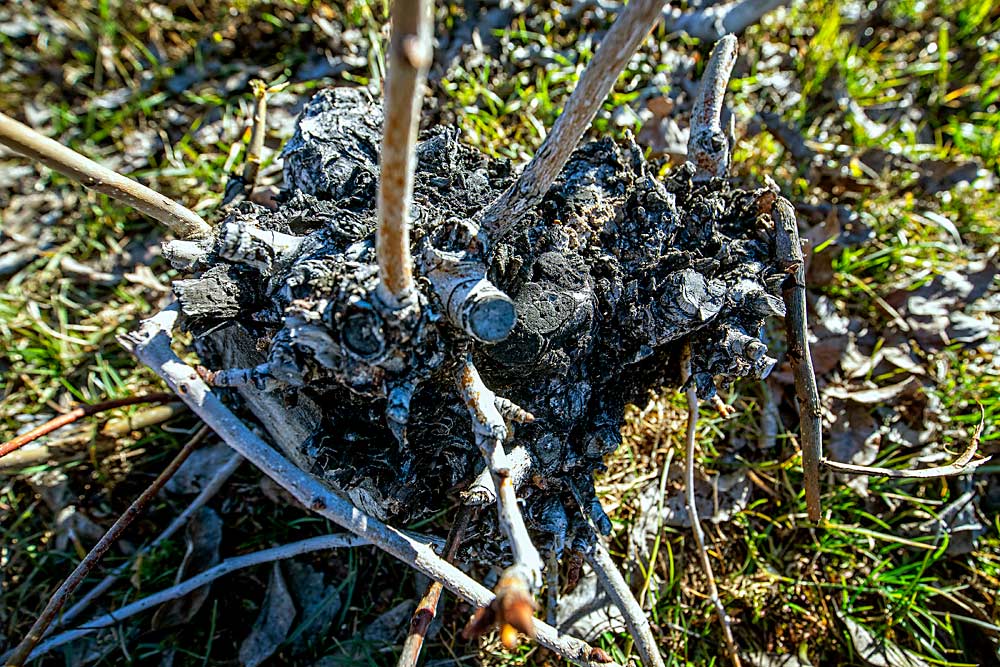
Loppers
After the largest cuts are made, good pruners turn their eyes to buds. Older spurs with small buds are not going to produce high-quality fruit, Musacchi said, but you want to leave the large buds.
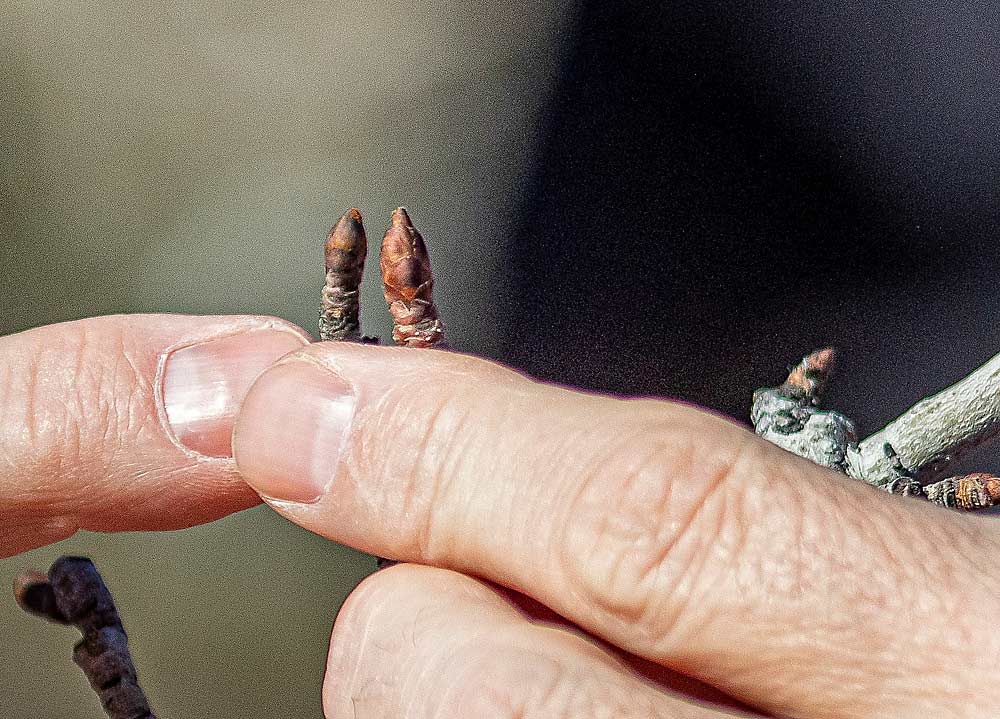
“They are also pruning looking at the size of the bud,” he said, as Prey and Harnden pruned. “Each cut they are doing, they leave the good ones.”
When it comes to the vertical 1-year-old shoots growing up off the leaders, Harnden said he removes the long ones entirely and leaves the 12- to 16-inch ones if they have a terminal flower bud. Those will set fruit that will weigh them down into a better position, where they’ll grow into new fruiting wood to replace the older spurs.
Meanwhile, Prey headed back a few 1-year shoots that were in position to grow into new leaders. “On Anjou, I only head what I want to grow out,” he said. That heading cut is a vegetative cut, he said, so the branch will grow into the space instead of setting fruit.
Asked if he counts buds as he prunes, Prey said for him, he cuts back branches to the number of buds that, as fruit, the branch can support.
Schmitten said when he’s pruning, he looks for pendant wood — downward-growing limbs that produce lower-quality fruit — and old spurs that start to get grayed out should go, too, because the buds are just getting weaker.
“Work on getting those old spurs out and leave as much of this fine wood on as you can. This is your future,” Piper said.
Pruning for the future
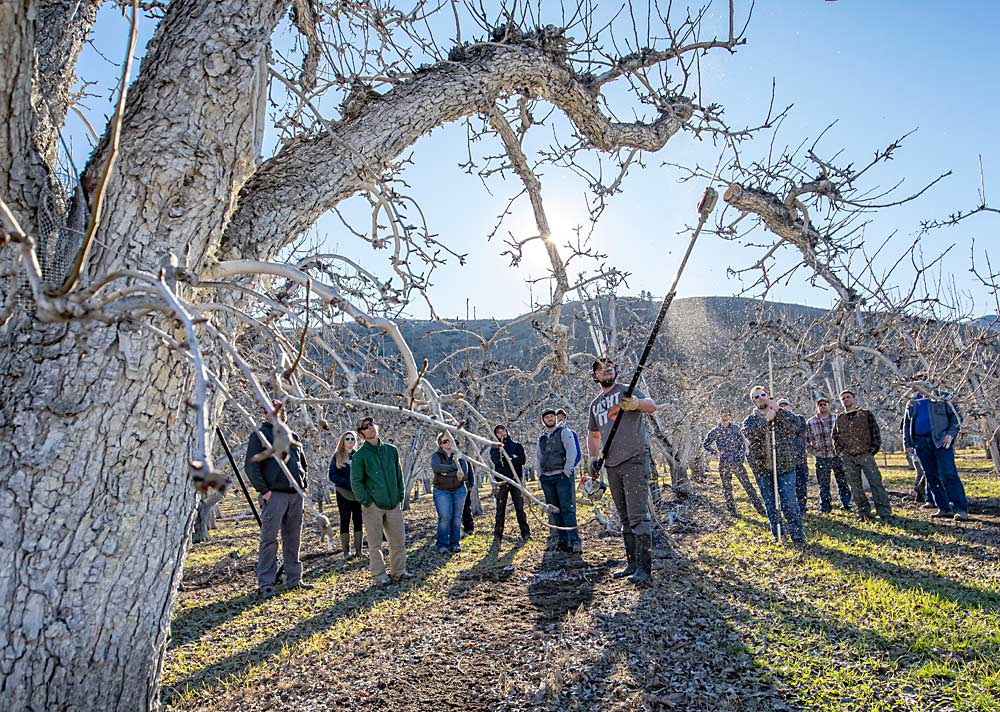
Pruners have to make choices that balance this year’s crop against the long-term productivity. That’s why Musacchi recommends the growers or their experienced employees make the big cut decisions. “You are deciding a lot about your future crop with the big cuts,” he said.
So, when Sam Parker approached a tree with relatively well spaced limbs for good light interception and spray penetration, he had to make a more difficult choice for a big cut.
“That’s for in five years,” Parker said, as he sawed off the end of a leader.
“We’ve lost a box of pears, but now we’ve redirected the sap flow,” he said. Promoting the growth of a new leader will pay off in the long run. “What do you get off of slick wood in Anjou? U.S. number ones,” he said.
Under the big old limb, the tree also had a lot of unproductive space. “This is your milk and honey right here, this will make your bank payment,” Parker said, standing in that empty space. He suggested making a few girdling cuts in the trunk, just above new shoots, so that the stalled sap flow will push those into new fruiting limbs.
Filling that space with production again is going to be a multiyear process, said Shawn Cox, who owns the orchard that hosted the demo.
On a final tree that was clearly in decline, Cox and Parker opted to prune aggressively in a final attempt to spur more vigorous growth. At that point, “you don’t have much to lose” with hard pruning, Cox said.
How did it feel to let all these different pruners bring their approaches to his orchard? “I wish they’d gone harder,” Cox said. “There’s a lot of the block left to go.” •
—by Kate Prengaman






Leave A Comment